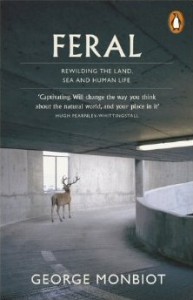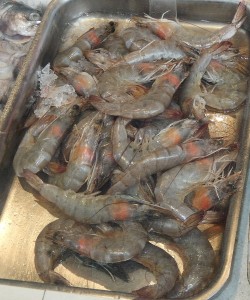
All posts by Ian Alexander
Advice to a Young Property Developer
In 1942 the scholar of Middle English, christian apologist and author of the Narnia books, C.S. Lewis, published The Screwtape Letters. The explanatory subtitle was Letters from a Senior to a Junior Devil, indicating the purpose of the book, to educate the young devil in the most effective means of corrupting humans from the paths of goodness and righteousness. Of course, we believe (or are free to imagine) the book to have a different purpose altogether for its human readers. In that spirit, here is some Advice to a Young Property Developer.
—o0o—
Dear Frango, you are trying to get planning permission for a huge, ugly glass and concrete stump in a beautiful area that is already fully built-up with attractive rows of houses and their little gardens, small friendly shops and peaceful parks. I understand you like strolling around the area at lunchtimes. Enjoy it by all means, but do not allow your feelings for the area to intrude on your work. Professionalism must come first. Your company’s existence, your job and those of your colleagues depend absolutely on your being able to work unsentimentally and methodically towards the goal of making money through development. You must use all means at hand, within the law or where necessary without it, taking all due precautions of course, to achieve the desired ends in good time. Time is money, as you will become aware. Each month’s delay costs the company a month’s salary for all the employees involved, as well as a month’s interest on the money it has borrowed from the City. It also delays by a month the necessary returns to the company’s owners and shareholders, and your jobs depend ultimately on their confidence in your professionalism and reliability. Therefore, do everything you can not just to get the job done, but to overcome opposition quickly. Leave your feelings for lunchtimes and evenings. All the best, Nick.
Dear Nick, thank you for your letter. I’ll do my best, but we are heavily tied down by planning law, especially the need to consult widely and to provide 40% social housing. What a nuisance! It takes ages and the social housing will cut our profits down terribly. Any ideas? With many thanks again for your help, Frango.
Dear Frango, you are quite right to ask. The good thing about the rules on consulting is that you only have to do it within a fixed distance – I think it’ll be 500 metres in your case. This may sound a lot, but if you choose a site at the boundary of a park or commercial estate, or beside a river for instance, you’ll immediately halve the area involved as you’ll only have to consult in half a circle. Even better, if you can find a place near a borough council boundary, you can forget about the people in the other council! What an excellent rule! Of course, if you’re near an administrative boundary and also beside an industrial estate, then hardly any local residents will ever get to hear about your project, until it’s too late. Things are pretty well stacked in our favour!
As for the 40% social housing, I wouldn’t get too hung up on the percentages. We can easily offer the council some cash “in lieu” of the social housing: they can announce they will be using it somewhere else, some time in the future, to build some social housing, somehow or other (certainly not with us, there’s no money in it, but I’m sure if they offer a building contract, there’ll be some builder willing to take their money off them to throw up some matchwood stuck together with spit for the deserving poor. As soon as your council smell the money – we can call it Section 106 you know, even if it isn’t exactly compensation – they’ll be eating right out of your hand. Your affectionate uncle (may I call myself that?), Nick.
Dear Nick, of course you can be my uncle if you like! Thank you so much for your helpful suggestions. They are just what I needed. My team leader was really impressed in our weekly meeting this morning. We’ve got a suitable site lined up and think we may be able to get away with a 42-storey tower! I couldn’t have imagined we’d be able to risk anything so profitable around here. All the best, Frango.
Dear Frango, delighted to hear it’s all going so well. Do be careful not to get your hopes up too early: remember there are many steps to the process, and “obstacles” to be overcome. Take things one at a time, though, and you’ll soon be in management. Your affectionate uncle, Nick.
Dear Nick, you were right. We’d hardly got started when an incredible busybody of a local nuisance – I think she’s got a lawyer for a husband – has started complaining to all and sundry, and we haven’t even put in a planning application yet. She’s pointed out that we’re in breach of the Local Plan, and that we can’t use Section 106 money to compensate for lack of social housing. If only we could shut her up… Your stressed-out “nephew”, Frango.
Dear Frango, something like this always happens. The good news is, we’re still here, and we have deep pockets. Of course we don’t want the delay and expense, but the fact is, we can cope with it, as we have done on every previous project. You’ll find a way around it. Remember that the busybody and her husband have no funds to fight us with, and plenty of other things to worry about – they have to earn their living, and fight off all our “friends” who are planning developments in the same area. Did you hear about the combined housing/office/retail development just off the high street, and the swimming pool/cinema/housing complex where the old tennis courts were? They’ll be run off their feet, you’ll see, and we can reapply with a marginally different proposal if your 42-storey tower actually gets rejected. So I wouldn’t worry too much if I were you. Your affectionate uncle, Nick.
—o0o—
Buy The Screwtape Letters from Amazon.com
Buy The Screwtape Letters from Amazon.co.uk
(Note: this is not a book review, and the letters here are not from The Screwtape Letters. All the same, you may find the book interesting.)
Of Burning Brash and Orange Peel (Fungus)
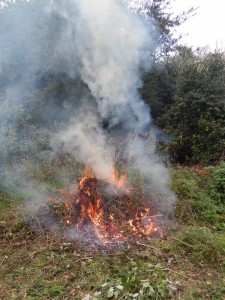
Today, with dry weather, damp ground and a gentle breeze it was perfect for burning some of the brash that we had cut in the past few months. Three enormous piles of wood and brambles were eaten up by the flames. As we raked up the remains, a few little frogs, charmingly bright green, hopped away. A red admiral butterfly fluttered energetically around an ivy bush.
On bare ground in the open meadow was a good clump of Orange Peel Fungus, Aleuria aurantia. With its brightly coloured open cup, it’s clearly an Ascomycete. It’s said to be edible; it looks as if something – maybe a snail – has been eating away at this one.
Destroying Angel and other Fungi at Gunnersbury Triangle

With the rain, mushrooms are suddenly pushing up.

The acid grassland is dotted with large handsome puffballs; under the birches are a lone destroying angel, a small spherically-capped fly agaric, a brown birch bolete, and many smaller fungi including the amethyst deceiver.
The tail end of Hurricane Gonzalo is blowing leaves off the trees; the reserve is quite sheltered, and it is pleasant to work in the passing showers and bursts of sunshine, pulling up ivy and brambles, making space for grassland to regenerate and for new saplings to sprout. But with the mushrooms and the wind, it is at last starting to feel like autumn.
Of Muntjac and Roosting Cormorants
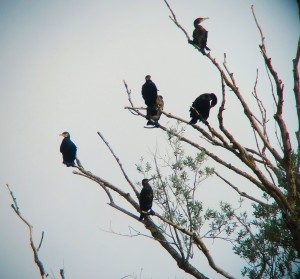
Yet another astonishingly warm day, not exactly Indian Summer now with a cloudy start, but too hot for more than a t-shirt by midday. The Wraysbury Lakes were quiet, the winter ducks represented only by a few shoveler and a couple of gadwall. The most impressive waterbirds were the cormorants roosting on the dead branches of a large willow.
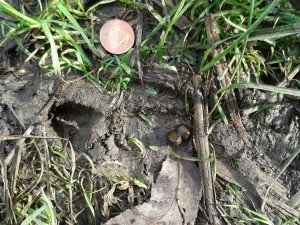
On the path I found a single muntjac deer footprint, with its tiny pellets. A few goldfinches twittered in the bushes, and a linnet. A buzzard circled over the hills in the distance.
A Surprising Workday with London Wildlife Trust
Most of my last few visits to Gunnersbury Triangle have been taken up with untangling a mass of fallen Willow trees in the mangrove swamp. One tree fell on the next, which fell on the next … and the whole lot were in sticky mud with a rising autumn water table, covered in ivy to boot. I lopped, chopped and carried branches and lumps of ivy away, getting happily hot, tired and dirty in the process.
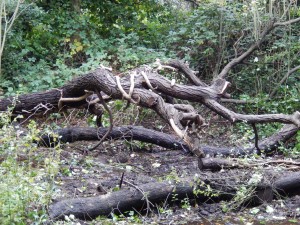
Yesterday I wandered around with no tools other than camera and binoculars, and was rewarded with the sight of a Grey Wagtail, a Robin and a Wren hopping about and feeding in their different styles, exactly where I had been clearing.
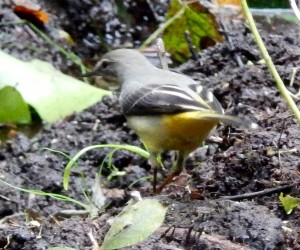
The wagtail was gobbling mouthfuls of grubs that it grabbed from the soft mud. It constantly bobbed and wagged its tail, displaying its yellow rump in the process. Could that be aposematic – is the yellow, in other words, a warning that the bird is distasteful? If not, why does it constantly flash yellow, even when no other birds of its species are about?
Today, I finished lopping the fallen Willow branches; as these last ones were over on the side, it was a cleaner and drier job. Then I joined in with a corporate group from Lend Lease, a well led and relaxed team … of property developers. They were incredibly pleasant to be with. The next surprise was at the hut when we all had a cup of tea: a nice Indian businessman in a suit came and asked us if his firm of engineers could use the reserve … for a group meditation. They stood about quietly and respectfully in a group, at least one person with hands pressed together in the ‘namaste’ position. We went on clearing and coppicing in the delightful autumn weather.
I got a small winged bug in my mouth; it released a pungent taste of cinnamon oils. Probably that is a chemical defence too: certainly a powerful taste, probably unpleasant in any quantity; but it was not bad in a one-off dose.
I ended my day sawing off some of the tree-stumps left over from the coppicing, together with one of the very capable and enthusiastic London Wildlife Trust trainees. It’s tremendous to see such good work going on in the reserve. And a piece of excellent news: a new warden has been appointed to manage work on the reserve, along with a West London warden who will be based here, but will have the massive task of keeping all the Hillingdon reserves from getting totally overgrown with hawthorn and blackthorn, among other things. So, suddenly, the place is full of life! Let’s hope we soon get our new visitor centre, we need it.
Conservation work with property developers; meditating engineers. You couldn’t make this up, or if you did, nobody would believe you. People say nature opens your mind, helps you feel relaxed. It does, you know.
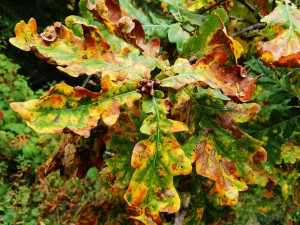
Book Review: The Old Ways by Robert Macfarlane
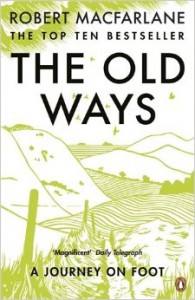
The Old Ways completes Robert Macfarlane’s trilogy about the British landscape, the earlier (and excellent) books being The Wild Places and Mountains of the Mind. As in those books, nature is a major player in The Old Ways, along with the people that Macfarlane meets in the places he visits. The ‘old ways’ are not only footpaths; sea roads too find a place, as he sails in an open boat, the old way, with knowledgeable guides. The footpaths, too, are not only in Britain: there is a marvellous pair of chapters on the poet Edward Thomas, ‘Flint’ and ‘Ghost’, as Macfarlane tracks him across the South Downs, and then to Thomas’s death as an artillery officer on the first day of the Battle of Arras, poignantly described with “The morning is a triumph for the British batteries”. Yes, we think; but was it worth the loss of one poet’s life, thousands of other lives. This is fine writing, not escapism, nor yet history, but a walking meditation that encompasses human life past and present, situated in the natural and human world with all its elements—social, political, emotional, spiritual.
Buy it from Amazon.com (commission paid)
Buy it from Amazon.co.uk (commission paid)
Book Review: Feral by George Monbiot
Well, what a terrifically interesting book. I’ll say at once that while I’m right up there with Monbiot’s dream of a well-rewilded landscape (with a bit of wildwood near you for peace and refreshment from the electronic world), Monbiot is so bold in his arguments that it’s impossible to agree with everything he writes.
The starting point for this book is that we all feel the need to be free of our society’s stifling artificiality. We quietly hate being stuck on commuter trains, boxed into offices, jammed onto pavements, trapped in front of screens, permanently at the beck and call of electronic devices and social media. Monbiot is very funny on this sad topic. He uses as evidence not all this stuff from today’s world – you know it already – but the results when people from our world have gone into tribal societies: they uniformly want to stay. Conversely, when tribespeople have visited our world, they always want to go back home. Wild, 1. Civilised, 0.
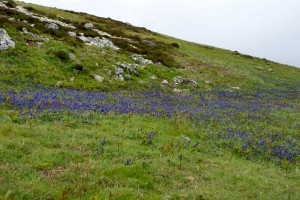
Monbiot moves to Wales, near the bare open heathery uplands of the Cambrian Mountains, that everybody tells him are beautiful. He finds what every hillwalker (myself included) must have noticed without thinking too much of it, that there are very few species up there: few flowers (save Tormentil, a marker of overgrazing as sheep won’t eat it), few insects, few birds.
“I hate sheep”, writes Monbiot, startlingly: no echoes of Wainwright here, no grudging admiration of those toughest of hillwalkers, the mountain sheep like the Herdwicks of Lakeland. He hates the bare sward, devoid of trees. Trees? On the mountains? Yes, he shows us the record from pollen cores: from the end of the last ice age, the Welsh uplands were covered in forest – hazel, oak, alder, willow, pine and birch. “By 4,500 years ago, trees produced over 70 per cent of the pollen in the sample.” Then, Neolithic farmers cleared the wildwood, and by 1,300 years ago the trees had gone, replaced by heather. And domestic animals, sheep and cattle, replaced the great beasts of the forest: the elk, bear, wolf, wild boar, lynx, wolverine. Even the mild beaver was driven to extinction.
Just proposing to rewild the British Uplands would be controversial enough, though the process has begun with many small schemes and a few large ones – Trees For Life’s vast Caledonian Forest project notable among them, with (at its core) the 40 square kilometres of the Dundreggan estate becoming bushier by the year. Proposing the reintroduction – the release into the wild, not yet legal in Britain – of beaver and boar and elk and lynx is more dramatic still. But Monbiot would like the large predators, too. Gulp.
And he goes further. We are all guilty of “Shifting Baseline Syndrome” (let’s call it SBS for short, it sounds a horrible disease). We imagine the world should be as we recall it from our own childhood. But it was already depauperate then!
Monbiot would like to allow nature to rebuild itself, with a little help to get started where necessary. He observes a remarkable fact that again we hadn’t thought much of: if you cut a tree, or lay a hedge of hawthorn, hazel, oak, willow – it sprouts vigorously up from the broken trunk, the cut stumps, the splintered branches. Why did our native trees evolve those responses? Because, argues Monbiot, they are adapted to large herbivores. Really large herbivores: elephants, rhinoceroses. Oh my. He wants to bring those back too. Actually it was the straight-tusked elephant we used to have: and the woolly rhino, both extinct: but Monbiot suggests that the living species are good and close replacements. Clearly, getting the relevant permissions might take a little time.
These are just some of the big, meaty ideas in Feral. There are sacred cows in there: the conservation authorities value the bare uplands, and certainly they have a beauty, manmade or not. The story is powerfully told, enlivened and illustrated by tales of wild (and dangerous) personal adventures. Monbiot knows his ecology and his landscapes: he just interprets them differently from the establishment. Quite often, as with his descriptions of the disgraceful overfishing practised by Britain and the European Union, he is certainly right. At other times he is controversial, even combative, but always fascinating. Whether you agree or disagree, if you’re interested in nature – as I assume you are, given that you’re here – you need to read Feral.
Buy it from Amazon.com (commission paid)
Buy it from Amazon.co.uk (commission paid)
Read the blog post: “Meeting George Monbiot“
Why You’ll Never Eat Dredged Scallops Again
Why You’ll Never Eat Dredged Scallops Again

With the possible exception of dynamite fishing, it would be hard to devise a more effective means of destroying both living creatures and their habitats. Scallop dredges operate by raking through the seabed with long metal teeth, dislodging the shellfish from the sediments and trapping them in a net whose underside is made of chain mail. The teeth rip through any sedentary creatures in their path, as well as the fish, crabs and lobsters unable to escape in time. The steel mesh smashes animals missed by the teeth. Where they are used, divers publish heartbreaking photographs of the seabed before and after they have passed. It looks, where the dredges have worked, like a ploughed field, lifeless, covered in fragments of shell.
— George Monbiot. Feral: Rewilding the Land, Sea and Human Life. Penguin, 2014. Page 252.
Eating Swordfish, Halibut, King Prawns is Hypocrisy
Eating Swordfish, Halibut, King Prawns is Hypocrisy
We rightly deplore the apparent unconcern with which [Bluefin Tuna] is being driven to extinction. But it is not a world apart from the habits of liberal, well-educated people I know in Britain – friends and relatives among them – who, despite widespread coverage of the impacts of unsustainable fishing on television and in the newspapers they read, continue to buy species such as swordfish, halibut and king prawns, which are either in dire trouble or whose exploitation causes great ecological damage.
— George Monbiot. Feral: Rewilding the Land, Sea and Human Life. Penguin, 2014. Page 246.


